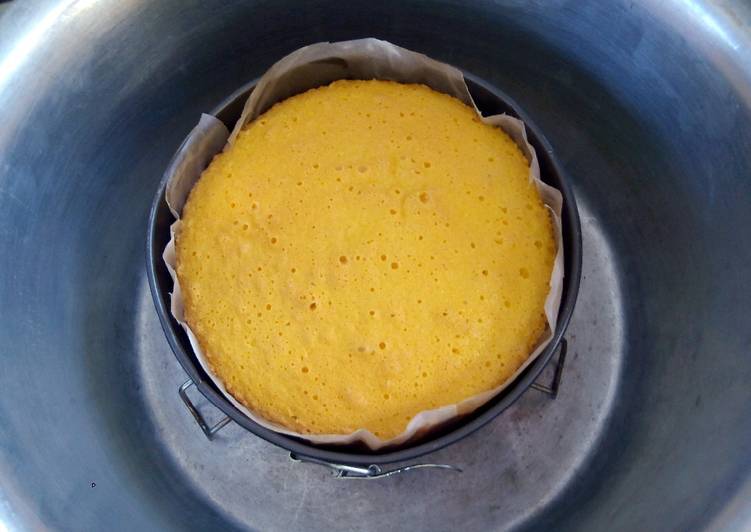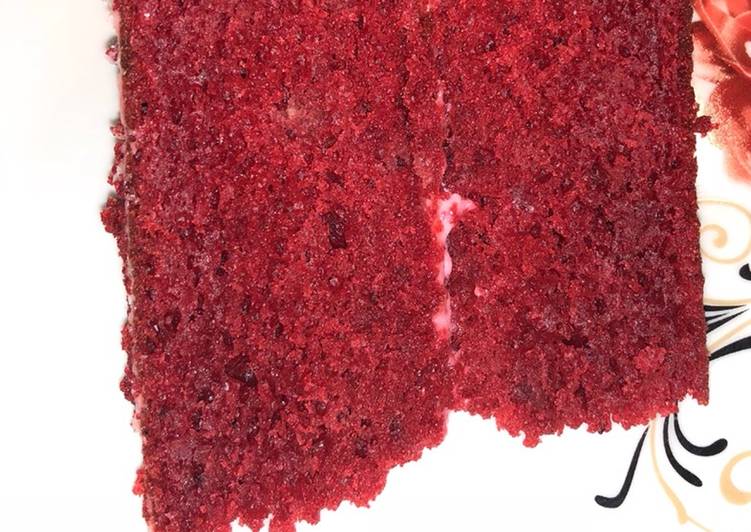
Hey everyone, it’s Louise, welcome to my recipe page. Today, I’m gonna show you how to make a distinctive dish, victoria sponge cake. One of my favorites food recipes. For mine, I’m gonna make it a bit unique. This will be really delicious.
Mary Berry's easy Victoria sponge cake recipe is a baking classic and a tasty tea-time treat. Line the bottoms of the pans with. The Victoria Sponge was named after Queen Victoria, as reputedly it was her favorite cake. Anna, the Duchess of Bedford, who has been given credit for introducing the charming art of the afternoon tea.
Victoria sponge cake is one of the most favored of current trending foods in the world. It is appreciated by millions daily. It’s easy, it is fast, it tastes yummy. They are fine and they look wonderful. Victoria sponge cake is something that I have loved my whole life.
To get started with this particular recipe, we have to prepare a few components. You can cook victoria sponge cake using 9 ingredients and 10 steps. Here is how you can achieve that.
The ingredients needed to make Victoria sponge cake:
- Make ready Caster sugar
- Get Butter
- Prepare Large eggs
- Take Self raising flour
- Make ready Baking powder
- Take Milk
- Make ready Icing sugar
- Take Vanilla extract
- Take Strawberry jam
This Victoria sponge cake recipe combines strawberries and cream and is the perfect easy bake for afternoon tea. See more cake recipes at Tesco Real Food. A Victoria Sponge was the favorite sponge cake of Queen Victoria, and has since become a tried-and-true recipe for tea-time sponge cakes. Victoria Sponges are generally filled with jam, and are.
Steps to make Victoria sponge cake:
- Preheat oven to 170°c fan
- In a large mixing bowl add 200g caster sugar and 200g softened butter. Whisk until pale and fully combined, make sure not to over whisk or the butter can split.
- Add 4 eggs to the bowl and whisk until fully combined. Again be careful not to over whisk.
- Sift 200g self raising flour and 1 tsp baking powder into the bowl. Gently fold into the mixture until fully combined. Be as gentle as you can and take your time. Air is the key to the cake being fluffy.
- Add 2 tbsp of milk and 1 tsp vanilla extract to the bowl and gently fold it into the mixture.
- Line two 20cm sandwich tins with greaseproof paper. Gently divide the mixture between the two tins as evenly as you can and smooth out.
- Put the tins into the oven and bake for 20 minutes until golden and a skewer or knife comes out clean.
- Take the cakes out of the tins and place on a wire cooling rack. Leave to cool completely.
- For the buttercream: In a large bowl add 100g softened butter. Sift 140g icing sugar onto the butter. Whisk them together until smooth. Add 1/2 tsp vanilla extract and mix.
- Spread the buttercream over one of the cakes. Then spread 170g of strawberry jam on top of the buttercream and sandwich the other cake on top. Dust the top with icing sugar and serve.
A Victoria Sponge was the favorite sponge cake of Queen Victoria, and has since become a tried-and-true recipe for tea-time sponge cakes. Victoria Sponges are generally filled with jam, and are. If you made the Victoria sponge with whipped cream, use it the same day you assemble it since the whipped cream won't To learn how to make buttercream for your Victoria sponge cake, scroll down! Looking for a beautiful cake for a birthday or special occasion? Jamie Oliver's gorgeous classic Victoria sponge recipe with jam is a real showstopper.
So that is going to wrap it up with this special food victoria sponge cake recipe. Thank you very much for your time. I’m confident you will make this at home. There is gonna be more interesting food at home recipes coming up. Remember to bookmark this page in your browser, and share it to your family, friends and colleague. Thank you for reading. Go on get cooking!

